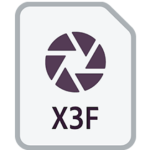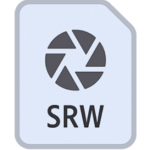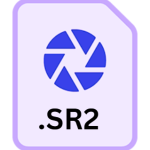.K25 File Extension

Kodak DC25 Digital Photo
| Developer | Kodak |
| Popularity | |
| Category | Camera Raw Files |
| Format | .K25 |
| Cross Platform | Update Soon |
What is an K25 file?
The .K25 file extension is associated with images taken by the Kodak DC25, one of the pioneering digital cameras in the mid-1990s.
These files are proprietary image formats unique to the Kodak DC25, embodying the early efforts of Kodak in digital photography.
The .K25 format encapsulates raw image data, which retains the original information captured by the camera’s sensor, offering a digital equivalent to a film negative.
More Information.
Kodak introduced the DC25 at a time when digital cameras were still in their infancy. The primary purpose of the .K25 file format was to store high-quality images that preserved as much detail as possible, which was crucial given the limited resolution and storage capacities of the time.
The raw format allowed users to manipulate the images post-capture without significant loss of quality, an advantage over the more compressed and lossy formats like JPEG that were also in use.
The introduction of the .K25 format represented Kodak’s commitment to maintaining high image quality while navigating the technical constraints of early digital cameras.
This format enabled photographers to edit and process their photos extensively, ensuring the maximum possible fidelity to the original scene.
Origin Of This File.
The .K25 file format was specifically developed by Kodak for its DC25 digital camera, which was released in 1996.
This format was part of Kodak’s broader strategy to innovate within the digital imaging space, leveraging their extensive history in film photography to bridge the gap to digital solutions.
The DC25 was targeted at consumers and photography enthusiasts, providing an accessible entry point into digital photography.
File Structure Technical Specification.
The .K25 file format is a raw image format, which means it stores unprocessed data directly from the camera’s sensor.
This raw data includes information about each pixel’s color and brightness without any of the adjustments or compressions typically applied in more common formats like JPEG or PNG.
Key Specifications:
- Resolution: The DC25 had a resolution of 493 x 373 pixels, and this resolution was directly reflected in the dimensions of the .K25 files.
- Color Depth: The color depth of these files is 24-bit, meaning each pixel is represented by 8 bits for each of the three color channels (red, green, and blue).
- File Size: The size of .K25 files varies depending on the complexity and details of the image but is generally larger than compressed formats due to the lack of compression.
- Metadata: .K25 files also include metadata such as the date and time the photo was taken, camera settings like exposure and white balance, and potentially additional information about the camera and shooting conditions.
Structure:
- Header: Contains metadata about the image and camera settings.
- Image Data: Raw sensor data in a Bayer pattern (a mosaic of colors used to capture images), which needs to be processed into a full-color image.
- Footer: Often contains additional metadata or a checksum for file integrity verification.
How to Convert the File?
Converting .K25 files to more accessible formats like JPEG or TIFF is often necessary for sharing or printing. Several software tools can perform this conversion:
- Adobe Photoshop: Open the .K25 file in Photoshop, then use the ‘Save As’ function to convert it to another format.
- GIMP with UFRaw Plugin: The open-source GIMP editor can open .K25 files using the UFRaw plugin, allowing for conversion to formats like JPEG, PNG, or TIFF.
- IrfanView: This image viewer supports .K25 files with the appropriate plugins and can batch convert them to various formats.
- dcraw: A command-line tool that supports .K25 files and can convert them to PPM or TIFF formats.
Advantages And Disadvantages.
Advantages:
- High Quality: Since .K25 files are raw and uncompressed, they maintain the highest possible quality from the camera sensor.
- Editing Flexibility: Photographers have more leeway to adjust exposure, white balance, and other settings after the fact without degrading the image quality.
- Archival Storage: Raw files are excellent for archival purposes because they contain all the data originally captured, allowing for future reprocessing with potentially better software.
Disadvantages:
- Large File Size: The lack of compression means .K25 files are significantly larger than JPEG or PNG files, requiring more storage space.
- Compatibility: Not all image viewers or editors support .K25 files, necessitating specific software to open and edit them.
- Processing Requirement: Because they are raw files, .K25 images must be processed (developed) into a viewable format, adding an extra step for photographers.
How to Open K25?
Open In Windows
- Adobe Photoshop: Fully supports .K25 files and offers extensive editing capabilities.
- IrfanView: Requires plugins but provides a lightweight solution for viewing and converting .K25 files.
- Corel PaintShop Pro: Another robust option for handling raw image files, including .K25.
Open In Linux
- GIMP with UFRaw: A powerful and open-source solution for Linux users, supporting .K25 files.
- Darktable: An open-source photography workflow application and raw developer that supports .K25 files.
Open In MAC
- Adobe Photoshop: Available for macOS, providing the same robust support as on Windows.
- GIMP with UFRaw: Works on macOS and can be used to open and convert .K25 files.
- Preview: macOS’s built-in image viewer may not support .K25 natively, but third-party software like Adobe Lightroom can fill this gap.













